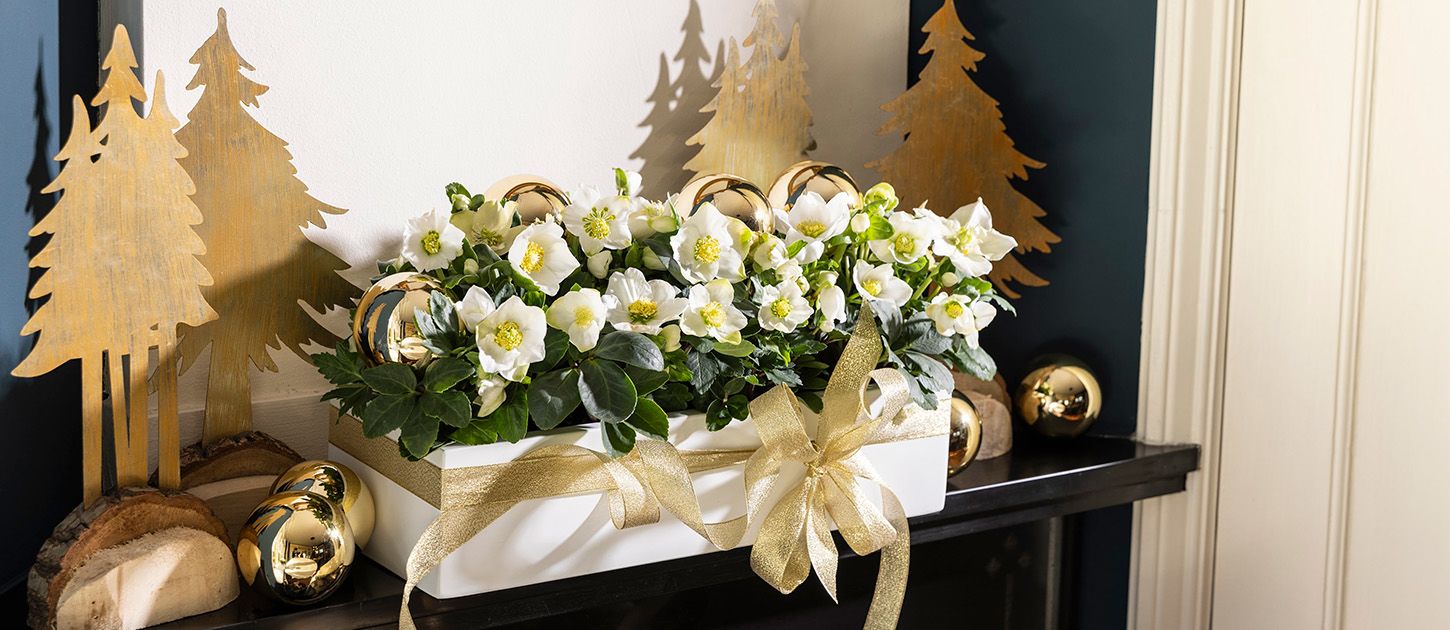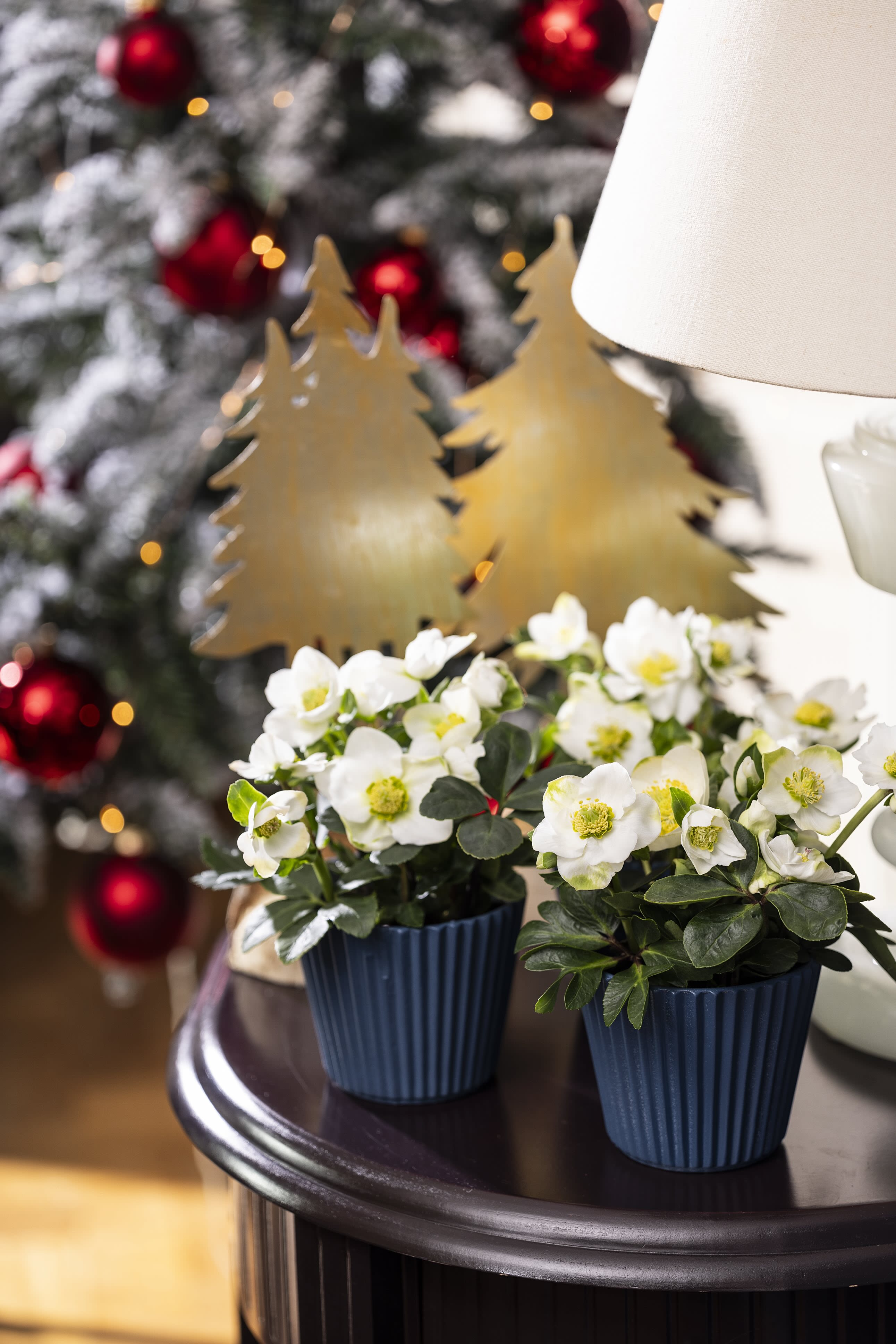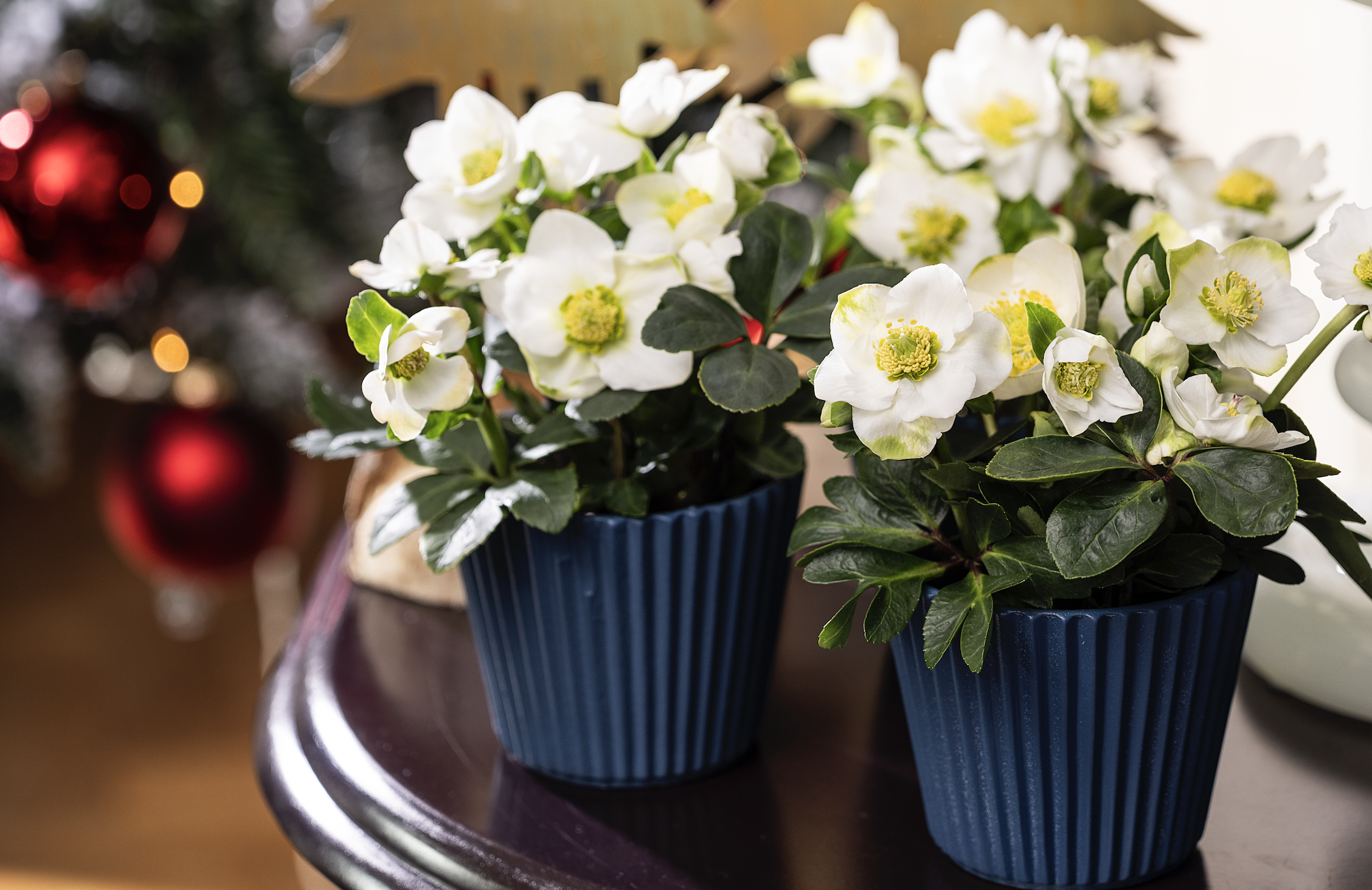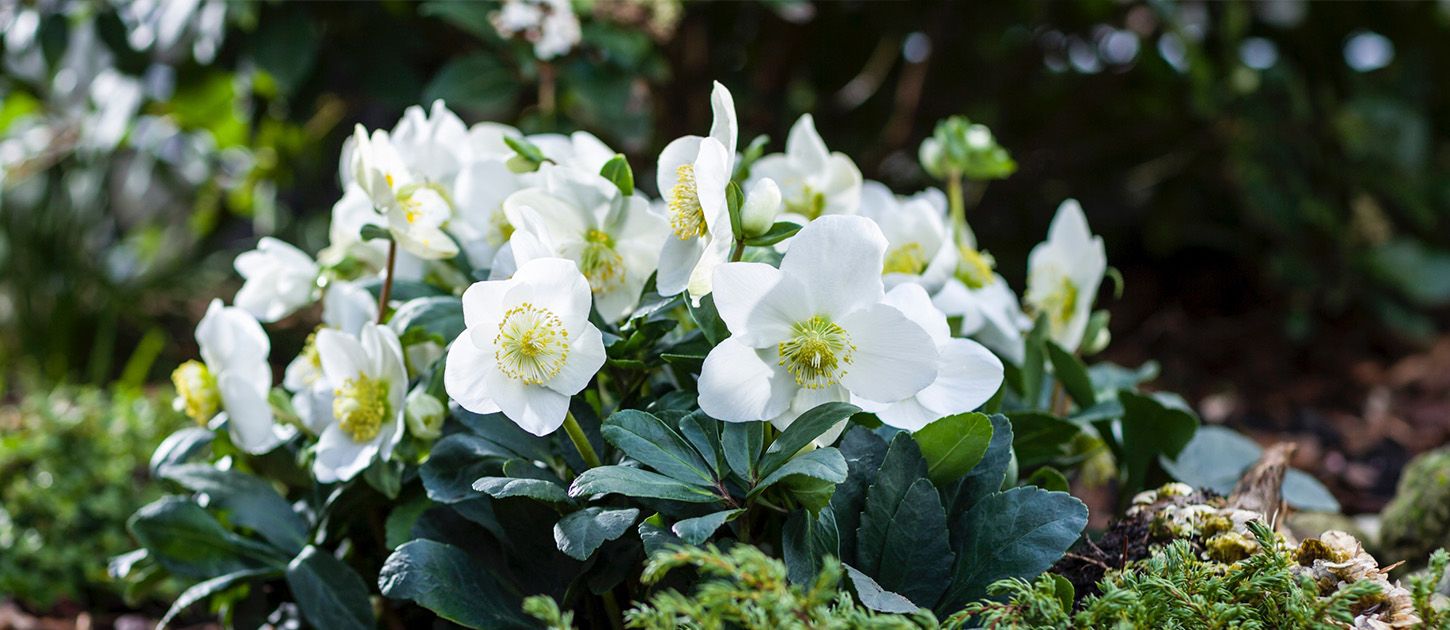Deck the halls with... hellebores
The sustainable plant for the holidays
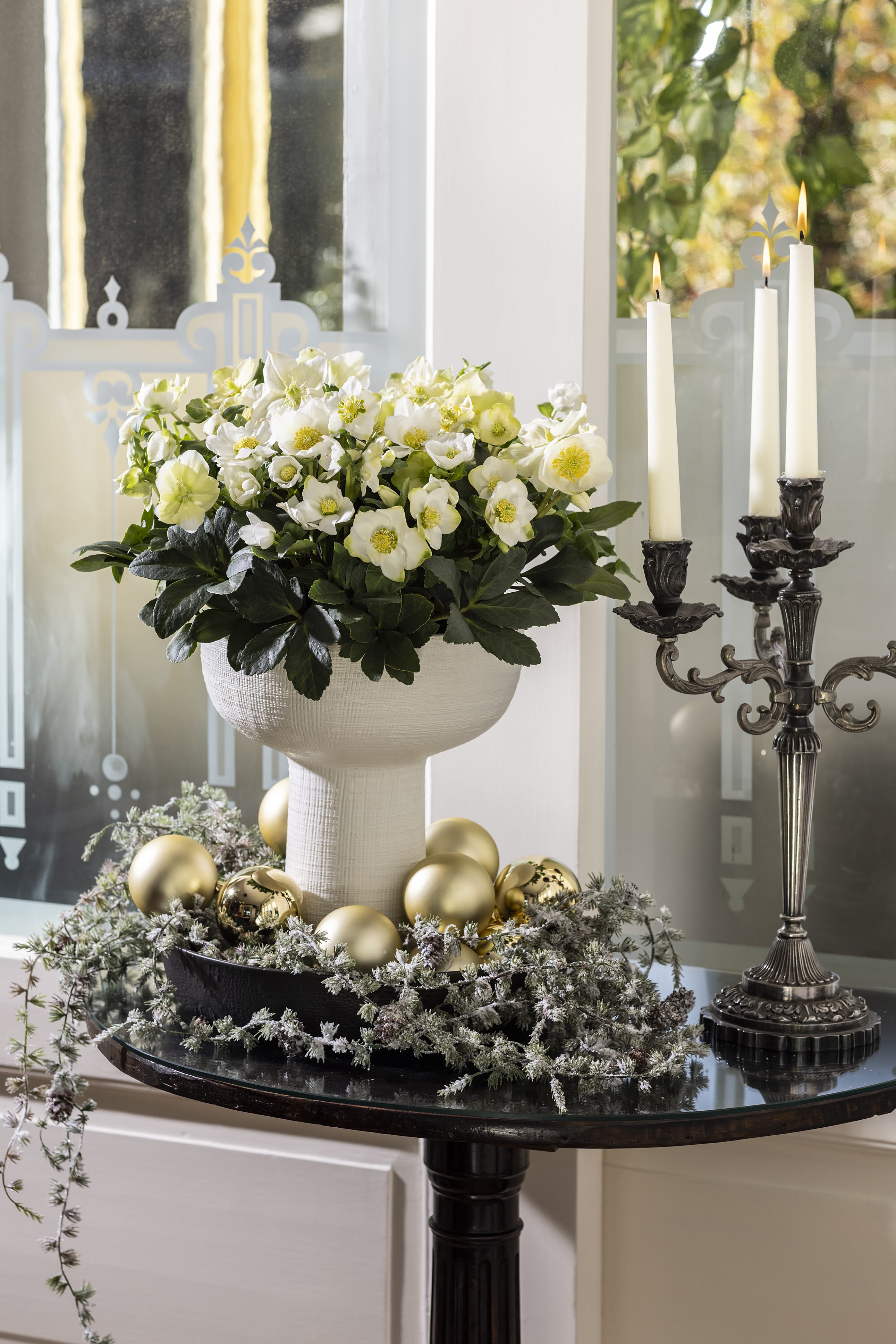
Is there anything more joyous than decorating the house for the holiday season? From putting up the tree and switching on fairy lights to unpacking ornaments and decorating, well, everything, with tinsel, it’s a wonderful time of year.
But welcoming nature inside at Christmas can be problematic. Mistletoe and holly are fun for a while but quickly shrivel and die. One of the most popular plants of the season – the poinsettia – fares little better.
Indigenous to Mexico and Central America, this red-leafed beauty usually makes it through Christmas but, by the new year, is often consigned to the bin along with leftover turkey and unwanted gifts. Once this tender plant’s splash of color fades, it’s as welcome as the pair of socks from a distant aunt.
Syngenta stopped producing poinsettias a couple of years ago, preferring to concentrate on sustainable Christmas plants that are suitable for both home and garden. The star of the show is the ‘Christmas Carol’, guaranteed to brighten up the dreariest day with its shining white flowers and strong dark green leaves.
Christmas Carol hellebores are a sustainable holiday plant that are suitable for both home and garden.
Christmas Carol hellebores are a sustainable holiday plant that are suitable for both home and garden.
“The helleborus is a much more sustainable and manageable crop for us but also for the consumer,” says Steve Waters, Product Manager Perennials at Syngenta Flowers. “There is that element of reusability because it turns from a pot plant into a garden plant.”
A plant is for life, not just for Christmas
While Syngenta has been developing hellebores (the botanical name for the Christmas Carol is Helleborus niger) for more than 15 years, the popularity of its Christmas Carol series has gathered pace thanks to its early flowering and compact foliage. Traditionally, the nodding flowers on hellebores don’t emerge until late winter or early spring, and some types can grow to three feet tall.
A year ago, two new Christmas Carol varieties were launched, ‘Christmas Carol Early’, which flowers on average two weeks before the classic version, and ‘Christmas Carol Compact’, suitable for smaller pots on indoor tables as well as balconies and terraces.
Waters says: “The ‘Early’ is doing very well and is fast becoming the new standard. The reason for also breeding the ‘Compact’ was to go into a more mass-market application, smaller product form offer. Major volumes are being switched between the original Christmas Carol and the new Christmas Carol Early.”
In addition, both the Early and the Compact varieties need far fewer plant growth regulators. This means that growers require fewer chemicals, adding to the plant’s environmentally-friendly credentials.
The Christmas Carol Compact is suitable for smaller pots on indoor tables.
The Christmas Carol Compact is suitable for smaller pots on indoor tables.
A plant is for life, not just for Christmas
While Syngenta has been developing hellebores (the botanical name for the Christmas Carol is Helleborus niger) for more than 15 years, the popularity of its Christmas Carol series has gathered pace thanks to its early flowering and compact foliage. Traditionally, the nodding flowers on hellebores don’t emerge until late winter or early spring, and some types can grow to three feet tall.
A year ago, two new Christmas Carol varieties were launched, ‘Christmas Carol Early’, which flowers on average two weeks before the classic version, and ‘Christmas Carol Compact’, suitable for smaller pots on indoor tables as well as balconies and terraces.
Waters says: “The ‘Early’ is doing very well and is fast becoming the new standard. The reason for also breeding the ‘Compact’ was to go into a more mass-market application, smaller product form offer. Major volumes are being switched between the original Christmas Carol and the new Christmas Carol Early.”
In addition, both the Early and the Compact varieties need far fewer plant growth regulators. This means that growers require fewer chemicals, adding to the plant’s environmentally-friendly credentials.
The Christmas Carol Compact is suitable for smaller pots on indoor tables.
The Christmas Carol Compact is suitable for smaller pots on indoor tables.
Holiday cheer
On average, 90 percent of the Christmas Carol series flowers before mid-December. Felicia van der Weiden, Marketing Communications Specialist at Syngenta Flowers, says: “I love that you can have it in your house for two weeks before the Christmas period and then, afterwards, you can enjoy it in your garden. And it comes back every year.”
Unlike poinsettias, hellebores are extremely hardy plants, tolerant of temperatures as low as minus 34 degrees Celsius. These conditions may seem extreme but bitterly cold climates are not uncommon. In Canada, for example, much of the country will see minus 20 degrees during the winter.
Martine Klasen, Product Marketing Communications at Syngenta, creates a seasonal arrangement with a Christmas Carol.
Martine Klasen, Product Marketing Communications at Syngenta, creates a seasonal arrangement with a Christmas Carol.
Hellebores are extremely hardy plants, tolerant of temperatures as low as minus 34 degrees Celsius.
Hellebores are extremely hardy plants, tolerant of temperatures as low as minus 34 degrees Celsius.
And, provided hellebores are placed in moist, free-draining soil, they are easy to maintain, with their flowers providing valuable nectar for early pollinators.
Van der Weiden says: “We’ve seen the Christmas Carol used more in Christmas planting arrangements and in combination with other species. And we’ve seen the smaller pots put in Christmas pieces on tables as part of the decoration.”
Waters adds: “The Christmas Carol makes a wonderful gift. Poinsettias are given as gifts, but are they gifts that people remember fondly? Probably not, because it died on them last year and will probably do so again this year. But the Christmas Carol is just like Christmas itself in that it comes back every year and greets you with a smile.”
The Christmas Carol is easy to maintain outside, with its flowers providing valuable nectar for early pollinators.
The Christmas Carol is easy to maintain outside, with its flowers providing valuable nectar for early pollinators.
Furthermore, given that hellebores happily brave chilly weather and can be planted outside after festivities have ended, embracing this sustainable Christmas plant mirrors the increasing trend of buying real Christmas trees - with roots - which can later be transferred to the garden.
So, it’s no wonder that the Christmas Carol is fast becoming a popular plant for the holidays. Tis the season to be sustainable, after all.
🎥 Create a stunning Helleborus Christmas Carol display.
🎥 Create a stunning Helleborus Christmas Carol display.
🎥 How to plant your Helleborus outside.
🎥 How to plant your Helleborus outside.
